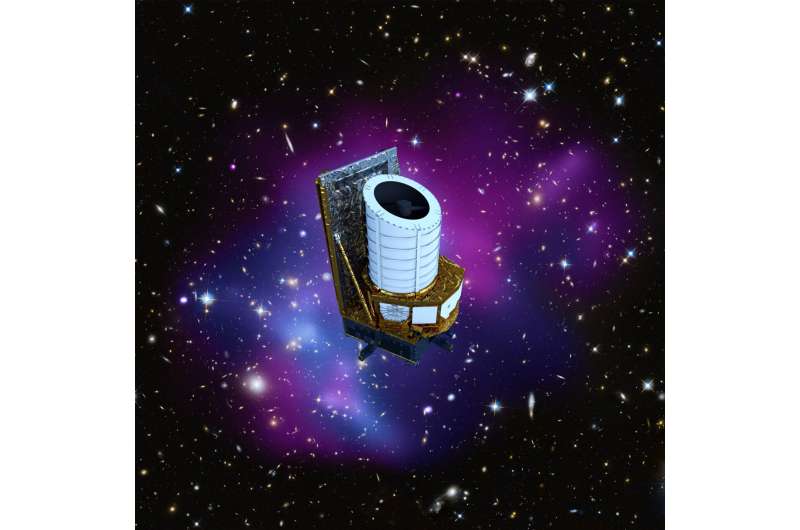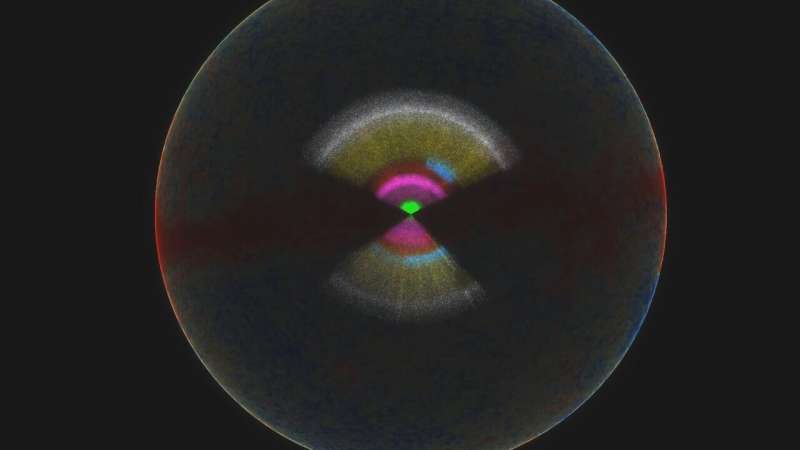
Classifying celestial objects is a long-standing problem. With sources at near unimaginable distances, sometimes it’s difficult for researchers to distinguish between objects such as stars, galaxies, quasars or supernovae.
Instituto de Astrofísica e Ciências do Espaço’s (IA) researchers Pedro Cunha and Andrew Humphrey tried to solve this classical problem by creating SHEEP, a machine-learning algorithm that determines the nature of astronomical sources. Andrew Humphrey (IA & University of Porto, Portugal) comments: “The problem of classifying celestial objects is very challenging, in terms of the numbers and the complexity of the universe, and artificial intelligence is a very promising tool for this type of task.”
The first author of the article, now published in the journal Astronomy & Astrophysics, Pedro Cunha, a Ph.D. student at IA and in the Dept. of Physics and the University of Porto, says, “This work was born as a side project from my MSc thesis. It combined the lessons learned during that time into a unique project.”
Andrew Humphrey, Pedro Cunha’s MSc advisor and now Ph.D. co-advisor says, “It was very cool to get such an interesting result, especially from a master’s thesis.”
SHEEP is a supervised machine learning pipeline that estimates photometric redshifts and uses this information when subsequently classifying the sources as a galaxy, quasar or star. “The photometric information is the easiest to obtain and thus is very important to provide a first analysis about the nature of the observed sources,” says Pedro Cunha.
“A novel step in our pipeline is that prior to performing the classification, SHEEP first estimates photometric redshifts, which are then placed into the data set as an additional feature for classification model training.”
The team found that including the redshift and the coordinates of the objects allowed the AI to understand them within a 3D map of the universe, and they used that together with color information to make better estimations of source properties. For example, the AI learned that there is a higher chance of finding stars closer to the Milky Way plane than at the galactic poles. Humphrey added: “When we allowed the AI to have a 3D view of the universe, this really improved its ability to make accurate decisions about what each celestial object was.”
Wide-area surveys, both ground- and space-based, like the Sloan Digital Sky Survey (SDSS), have yielded high volumes of data, revolutionizing the field of astronomy. Future surveys, carried out by the likes of the Vera C. Rubin Observatory , the Dark Energy Spectroscopic Instrument (DESI), the Euclid (ESA) space mission or the James Webb Space Telescope (NASA/ESA) will continue to give us more detailed imaging. However, analyzing all the data using traditional methods can be time consuming. AI or machine learning will be crucial for analyzing and making the best scientific use of this new data.
This work is part of the team’s effort toward exploiting the expected deluge of data to come from those surveys, by developing artificial intelligence systems that efficiently classify and characterize billions of sources.

Pedro Cunha says, “One of the most exciting parts is seeing how machine learning is helping us to better understand the universe. Our methodology shows us one possible path, while new ones are created along the process. It is an exciting time for astronomy.”
Imaging and spectroscopic surveys are one of the main resources for the understanding of the visible content of the universe. The data from these surveys enables statistical studies of stars, quasars and galaxies, and the discovery of more peculiar objects.
Principal investigator Polychronis Papaderos says, “The development of advanced Machine Learning algorithms, such as SHEEP, is an integral component of IA’s coherent strategy toward scientific exploitation of unprecedentedly large sets of photometric data for billions of galaxies with ESA’s Euclid space mission, scheduled for launch in 2023.”
Euclid will provide a detailed cartography of the universe and shed light into the nature of the enigmatic dark matter and dark energy.
Explore further
Astronomers produce largest 3-D catalog of galaxies
P. A. C. Cunha et al, Photometric redshift-aided classification using ensemble learning, Astronomy & Astrophysics (2022). DOI: 10.1051/0004-6361/202243135
Provided by
Instituto de Astrofísica e Ciências do Espaço
Citation:
Artificial intelligence helps in the identification of astronomical objects (2022, May 27)
retrieved 29 May 2022
from https://phys.org/news/2022-05-artificial-intelligence-identification-astronomical.html
This document is subject to copyright. Apart from any fair dealing for the purpose of private study or research, no
part may be reproduced without the written permission. The content is provided for information purposes only.